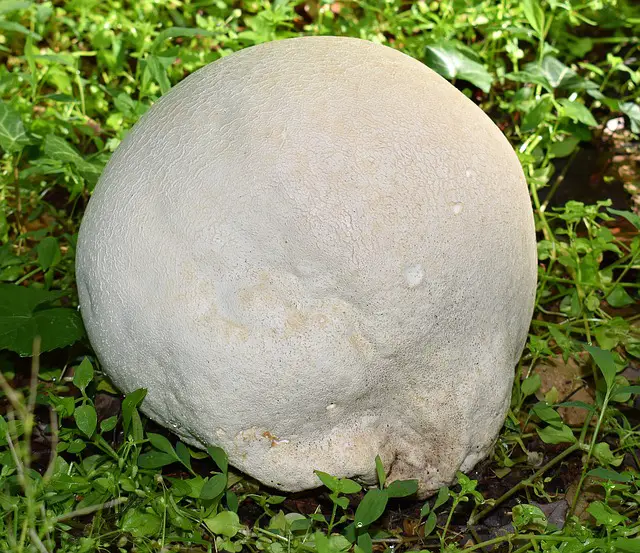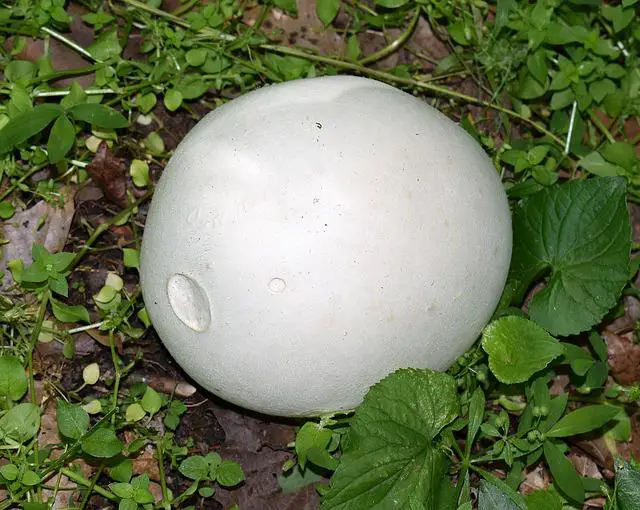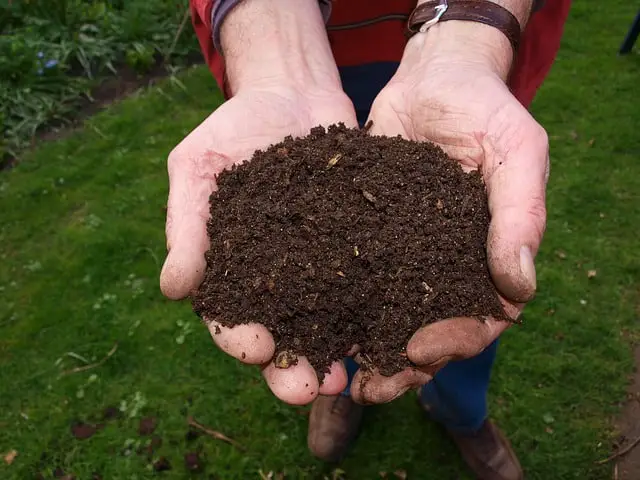Many different mushroom species can become a problem when you spot them growing in your grass, but puffballs are among the most common. If you want to clean up your outdoor space, then you might be wondering: how do I get rid of puffball mushrooms in my yard?
There are several ways that you can get rid of puffball mushrooms. Firstly, breaking them off or mowing them can temporarily remove the problem, although they will likely reappear. For a recurring puffball problem, you should remove decaying organic matter and adjust your watering habits. You may even need to aerate your lawn, through core aeration, or apply a fungicide.
This article will tell you everything that you need to know about clearing puffballs from your yard, including the techniques that you can use as well as some interesting information about these particular mushrooms so that you know how to identify them and whether or not they are actually a problem for you.

How To Get Rid of Puffball Mushrooms
To clear your yard of puffball mushrooms, there are a few different things you can do. The first step is clearing any active patches of growth. It is relatively easy to break the mushrooms off or dig them up, and even mowing will clear them away temporarily, but this is rarely a permanent fix.
Once a puffball has reached maturity, any contact will cause them to release spores which can germinate and grow into new mushrooms. This often results in recurring puffball growth when the spores keep landing in the right sort of soil.
To reduce the likelihood of new puffballs taking hold, you can make the environment less suitable for them. Puffballs like to grow in areas that have:
- Damp soil
- Lots of shade
- Decaying organic matter
To make your lawn less fungus-friendly, remove any organic matter that may decay, like dead leaves or old roots and stumps. This will starve the fungi and make it difficult for them to grow. You should also make sure that your soil is not too saturated. Reducing the amount of watering and allowing the top layer of soil to dry out can reduce the reappearance of fungi.

What Can You Do if Puffballs Keep Reappearing?
If you have removed the puffballs from your lawn, reduced your watering, and removed as much organic matter as possible but the puffballs keep coming back, then you can take slightly more drastic measures.
Firstly, you can aerate your lawn through a process known as “core aeration”. Essentially, this involves digging small holes all over the area using a specialised machine. This increases drainage and reduces moisture levels. With less moisture in your soil, you will notice fewer mushrooms starting to grow.
If you are really struggling with your puffballs, you can always try a fungicide. There are many fungicides out there which can kill off a particularly stubborn puffball infestation. Some are available as a simple pump spray, and some will even attach directly to your garden hose so that you can cover an area in no time.
Why Are They Called Puffball Mushrooms?
Puffball mushrooms love to grow on rotten wood, and they feed on decaying matter, but they are also very fond of grassy areas, like a typical lawn. They get their names from the way that they release their spores. Once they have become mature and dried out, their spores “puff” out every time they are touched.
Not all puffball mushrooms are the same. In fact, the term refers to a group of different mushrooms that encompasses several different genera. Unfortunately for many homeowners, some puffballs can grow to be particularly large and their widely spreading spores can cause a continuous cycle of new growth.
Some of the different types of puffball mushrooms that you might encounter include:
- Common Puffball (Lycoperdon perlatum)
- Meadow Puffball (Vascellum pratense)
- Brown Puffball (Bovista nigrescena)
- Mosaic Puffball (Handkea utriformis)
- Giant Puffball (Calvatia gigantea)
How Do I Know if I Have Puffball Mushrooms?
Identifying puffball mushrooms is relatively easy to do. Although there are several genera that are classified as puffballs, they are usually pretty distinct. These mushrooms look quite a lot like eggs or creamy white balls resting on the ground.
Unlike other mushrooms, puffballs are shaped like an orb, or sometimes a pear, and they don’t have a stalk. They also don’t have a cap or any gills, so they have quite a different appearance from most other mushrooms.
Do I Need to Get Rid of Puffballs?
When it comes down to it, puffball mushrooms are not a major problem for most yards. Most puffball genera are not poisonous, and they don’t usually grow to be particularly large. They are also great for clearing up organic matter and keeping your lawn healthy.
On the other hand, there are a few puffballs that can be poisonous, and they are known to give off a bit of a smell. Of course, many homeowners just don’t want to see the white balls on an otherwise immaculate lawn.
At the end of the day, whether or not to clean up your puffballs is a personal choice. They are generally not causing any harm (Instead, they are usually a benefit to the ecosystem of your outside space) but some people just don’t want them around.
Final Thoughts: How Do I Get Rid of Puffball Mushrooms in My Yard?
If you are having problems with puffball mushrooms in your yard, they are not too difficult to get rid of. Initially, you should break off or dig up the fungi, particularly any clusters that may have formed. Then, you should make sure that your lawn is not oversaturated and is clear of decaying organic matter to prevent them from growing back.
If your puffball problem keeps recurring, you can aerate your lawn to remove excess moisture, or you may even need to resort to a fungicide if they are being particularly stubborn.
At the end of the day, having these fungi around isn’t necessarily a bad thing, but if you do want to get rid of puffball mushrooms in your yard, a few adjustments to the environment should do the trick.


